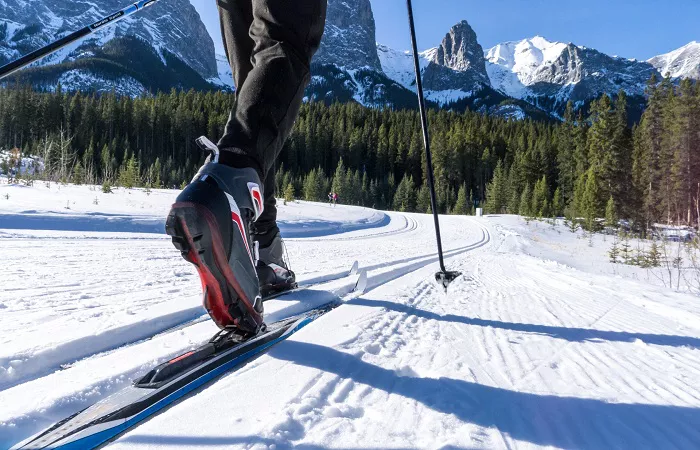As winter’s crisp air settles over snow-laden landscapes, cross-country skiing emerges as one of the most rewarding ways to embrace the season. Unlike its downhill counterpart, this sport offers a unique blend of endurance, tranquility, and full-body engagement—all while surrounded by nature’s pristine beauty. But before you can glide effortlessly across frosty trails, there’s an important question to answer: How much should you expect to spend on equipment?
The truth is, cross-country skiing gear pricing spans a wide spectrum, from budget-friendly starter kits to elite-level racing equipment. While the initial investment might seem daunting, understanding exactly where your money goes—and how to prioritize spending based on your skill level and ambitions—can make all the difference. This comprehensive guide breaks down every cost factor, helping you navigate the market with confidence and find the perfect balance between quality and affordability.
The price types and quality of cross-country skis
The most critical piece of equipment is the ski itself, and prices can vary widely depending on the material and intended use. Entry-level classic skis designed for beginners typically cost between $150 and $300. These skis are typically made of composite materials that provide a balance of durability and flexibility.
Mid-range skis, suitable for intermediate skiers, typically fall between $300 and $600. These models generally have better glide performance and improved stability. High performance racing skis are made from advanced materials such as carbon fiber and cost more than $1,000 for competitive athletes who demand maximum speed and efficiency.
The technology of snowboarding is different from that of traditional skiing, and its price structure is similar to that of traditional skiing. Beginner skis cost around $200, while pro skis cost $200 and pro skis cost $800 or more.
Boots and straps are key to comfort and control
Cross-country ski boots must match the strap system and ski style. Classic ski boots for casual use typically range from $80 to $80 to $200, while performance-oriented ski boots range from $200 to $200 to $400. Snowboard boots provide more ankle support and typically cost between 150 and 150 to 350.
The straps that connect boots to skis come in different systems, such as NNN (New Nordic Specification) and SNS (Solomon Nordic System). The basic bundle costs 40**, while the high-end automatic bundle costs $40, and the high-end automatic bundle costs $100 or more. It is important to ensure compatibility between boots and bindings to avoid additional costs.
Poles are an essential but often overlooked expense
Ski poles help with balance and propulsion, and their cost depends on the material and design. Aluminum poles, durable and affordable, typically cost $30 to $60. Composite or carbon fiber rods, favored for their lightweight properties, range from $80 to $150.
The correct ski pole length varies depending on the ski style. Traditional skiing requires poles that reach the skier’s armpit, while skating poles should be slightly longer, extending to the chin or mouth. Investing in adjustable poles ($50 to $120) is a cost-effective solution for those who switch between styles.
Additional equipment improves comfort and safety
In addition to the core equipment, there are some accessories that improve the skiing experience. The right clothes, including underwear that wicks moisture and sweat and a windproof jacket, can add $100 to $300 to the total cost. Gloves, hats, sunglasses or goggles are also required, and the total cost can range from $50 to $150.
For those skiing in low-light conditions, headlights ($30 to $100) are a smart investment. Depending on the size and quality, ski bags can cost $50 to $200 to transport and store.
Rent or buy: Which is the better deal?
Beginners who are unsure of a long-term commitment may prefer to rent equipment. Rental packages typically cost $20 to $40 per day, making them an affordable option for occasional skiers. In the long run, however, regular skiers will find it more economical to buy gear.
A full kit for medium gear (skis, boots, bindings, and poles) averages $600 to $1,200, while advanced gear can exceed $2,000. Used equipment is another cost-saving option, with used skis and boots often costing half the retail price.
Conclusion
Starting your cross-country skiing trip is not only an investment in gear, but also an investment in a lifetime of winter enjoyment. By aligning purchases with your actual needs – rather than fantasies – you can avoid overspending on abilities you won’t use, while still getting gear that boosts your progress.
Remember, the real measure of value is not the price tag, but the miles of pistes you will explore and the pleasure you experience each time you ski. Whether you start with a $500 beginner’s package, invest in a $500 beginner’s package, or invest in a $2,000 high-performance Arsenal, the rewards are reflected in crisp morning outings, heart-pounding climbs, and the unmatched tranquility of an endless winter wonderland.
When you’re budgeting for your gear, consider this: the memories you’ll create – silent forests, rose-colored sunrises, muscle-burning contentment – are ultimately priceless. With the right gear, every penny can be translated into action, freedom, and pure snow night joy.
Related topics
- HOW LONG IS CROSS COUNTRY SKIING?
- WHAT IS ROCKER TYPE SNOWBOARD?
- WHEN DOES GUNSTOCK OPEN FOR SKIING?

